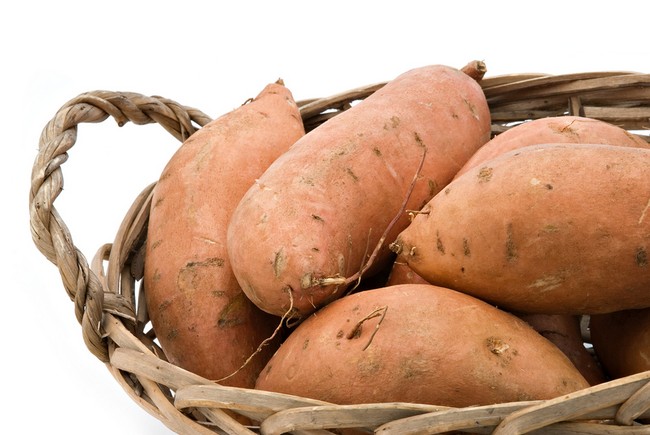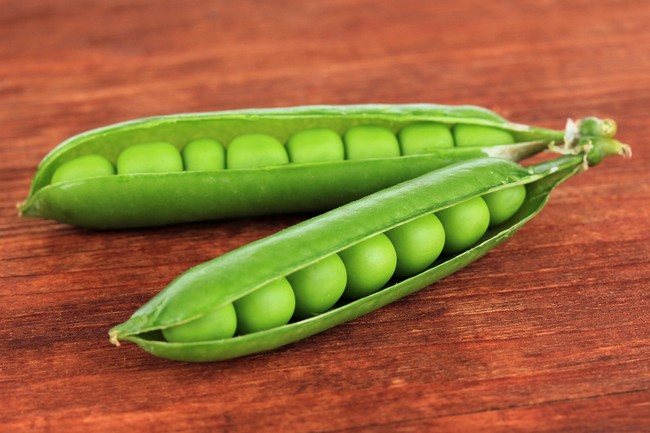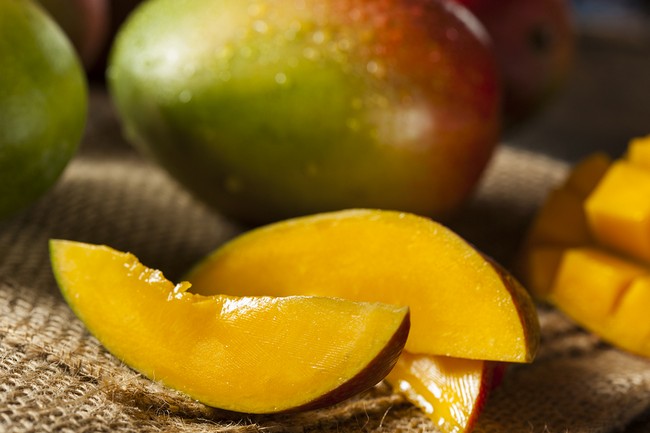- Make It Yourself Lavender Heart-Shaped Bath Bombs!
- 20 Things You Never Knew About “Down There”
- 12 Best Foods For Those Suffering From Arthritis Pain
- 12 Personal Hygiene Mistakes Almost Everyone Makes (Mom Never Told You About #4!)
- 15 Medicinal Plants And Herbs From The Cherokee People
- 12 Mind-Blowing Benefits Of Drinking Coconut Water During Pregnancy
- 12 Outstanding Winter Foods That Won’t Fatten You Up Like A Christmas Turkey
15 of the Least Contaminated Produce You Can Buy

Photo credit: bigstock
Did you know that, according to the Environmental Working Group, by eating organic fruits and vegetables you can reduce your risk of exposure to deadly pesticides by up to 80 per cent or more? Eating organic produce can reduce your risk of getting cancer or other health complications.
More than likely you have already read the Dirty Dozen list; these fruits and vegetables that are so contaminated you should really avoid them altogether unless you can buy organic. Now, having said that, it’s also fairly common knowledge that organic fruits and veggies are the healthiest option, but they can also be 20 per cent more in price than conventional produce.
If you are on a tight budget you may not be able to afford to go organic every time. It’s also possible that you live in a small town where produce that is organic is hard to find. This is where it helps to know all your options: the dirty 12 you should avoid (read also about foods you absolutely must avoid), and the clean 15 which you can feel better about buying. In fact, during tests conducted over an 8 year period, the USDA and the FDA came to the conclusion that if, on average, you consumed produce from the clean 15 list and ate organic foods only from the dirty dozen list, you could reduce your consumption of pesticides by up to 92 per cent. That is an impressive number.
You might be asking yourself, why is some produce is more contaminated than others? That would be because some fruits and vegetables have an outer skin which acts as a protective cover, so to speak. Think of the husk on an ear of corn, the hard shell of a pineapple, and the thick skin of a grapefruit as compared to strawberries, blueberries, and spinach. Find out shocking truth about farms.
1. Avocados
Besides tasting great on almost everything, avocados are generally safer to eat due to their thick outer skin that repels almost everything, including pesticides. Avocado trees are also disease and insect resistant themselves so fewer pesticides are used in general.
2. Pineapples
Due to their thick skin, pineapples are generally cleaner than other fruits.
No one eats that hard crusty outer coating, so after cutting them off, these yellow jewels are ready to enjoy.

Photo credit: bigstock
3. Grapefruit
Grapefruits are also protected by a very thick outer skin which protects the fruit inside, so you can enjoy grapefruits all day if you like.

Photo credit: bigstock
4. Mushrooms
Ok, think about this one. Mushrooms are a fungus that grows in humid layers of decaying matter.
It doesn’t seem like there are many bugs interested in living in the same kinds of conditions.
Mushrooms have made the clean list every year.

Photo credit: bigstock
5. Cantaloupe
Another fruit with a very thick skin that is removed for eating.
When you cut these, leave at least a half inch between the skin and the fruit itself for best protection.

Photo credit: bigstock
6. Eggplant
That shiny purple outer layer of the eggplant is what protects you from consuming too much pesticide residue.
Washing it will help increase your protection even further.

Photo credit: bigstock
7. Sweet Potatoes
No one seems quite sure why regular potatoes are very contaminated but sweet potatoes are not, but that’s the way it is.
Perhaps it’s the very hard, tough skin that keeps pesticides from penetrating their orange colored flesh.

Photo credit: bigstock
8. Kiwi
If you’ve never tried these because they look strange, perhaps it’s time.
Kiwis have a thick, fuzzy outer layer that you remove to reach the green sweet/sour fruit inside. Kiwis have made the clean list every year that they’ve been tested.

Photo credit: bigstock
9. Sweet Peas
That cute little pod that peas come in is their protection.
After removing those little green seeds, most of the residue remains with the pod that you throw away.

Photo credit: bigstock
10. Watermelon
Watermelons have a thick skin that also is water repellant, which means that most pesticides don’t stick to it very well.
Wash the outside and leave at least one half an inch between the fruit and the skin for keeping your pesticide exposure to a minimum.

Photo credit: bigstock
11. Cabbage
The majority of the pesticides used on cabbages remain on the outer layer of leaves, which are generally removed by either the produce department or by the shopper.

Photo credit: bigstock
12. Mangoes
Sweet, juicy mangoes also have a thick skin that is removed before consuming, so the pesticide residue has little chance of making into the meat of the fruit.

Photo credit: bigstock
13. Asparagus
This is another great tasting vegetable that makes the clean list with 90 percent of the samples tested having only pesticide residue.

Photo credit: bigstock
14. Onions
Onions are perhaps one of the least contaminated vegetables, with only 10 percent of the samples showing more than 1 pesticide residue.
This included white and yellow onions with no mention made of purple onions, however.

Photo credit: bigstock
15. Sweet Corn
Corn has a thick outer husk that everyone removes before eating.
The majority of pesticides remain on the husk. Also, since many people boil corn, many of the residuals are thrown out with the water.
Remember, however, that most corn is now GMO, so double check to be certain that the corn you buy is labeled NON-GMO.

































